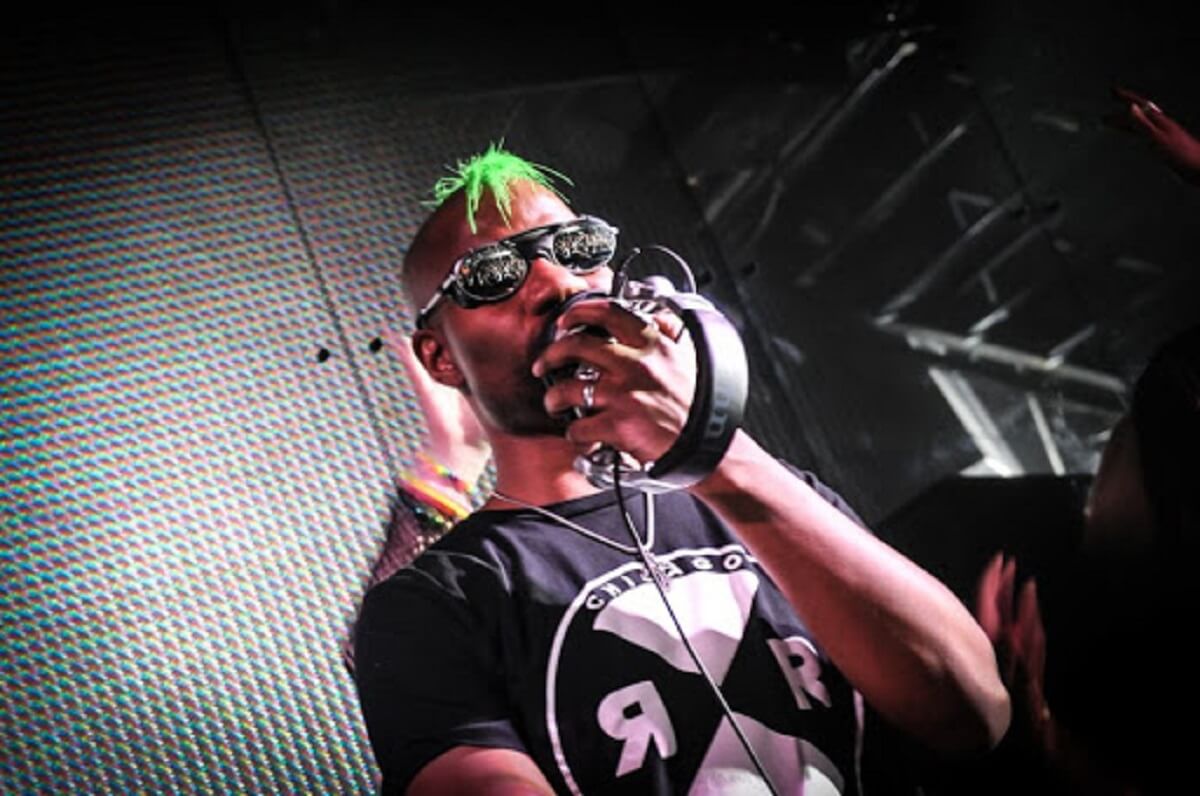Last year, we shared a look at the history of Black producers and their unmatched impact on the scene. This Black History Month we bring you a lesson from Green Velvet—a pioneer in the electronic music scene. Curtis Alan Jones has become an icon at the epicenter of dance culture.
Green Velvet taught me the truth. His vocals accentuated the hypnotizing beat and my body was no longer my own.
The very first song I appreciated by Green Velvet was “Flash,” released in 1995. I just remember thinking, “wow, this bangs!” and wanting more. This was when I thought all techno, house, and “EDM music” were the same thing.
I think it was this moment where I was able to hear the layers of synths and drums and discovered more than just lots of noise. So, as I started to venture more into that sound, my world was changed forever.
Jones gifted us many pivotal works throughout the decades. ‘Flash’ and ‘Preacher Man’ immediately come to mind—followed by his first album, ‘Constant Chaos’ in 1999. He then released his Whatever album which featured one of his biggest known tracks, ‘La La Land.’
Green Velvet is all about unity and positivity.
Green Velvet’s 2020 song with Eli Brown, “Unapologetic Raver,” is a song I encourage you to listen to RIGHT NOW. Mr. Curtis Jones goes off about how the scene has changed. We will get into this more, but basically, before, the scene was only about positive vibes and the music. “PLUR” wasn’t just a tweet or a caption—it actually meant something. It meant community.
Green Velvet’s music was and still is impactful in the scene. He urges people to research the history, whether it is Black History Month or not.
In the early 2000s, promoters and event organizations coined the term “EDM.” They did this in order to rid the negative stigma that came along with “raves” and not ruin their business model. This umbrella term lumped all electronic sounds into one easy-to-sell category. Unfortunately, as EDM has become more popular and begun attracting white audiences, its originators were forgotten. Subsequently, this gave rise to further discrimination against the same group of people who made this scene to escape that discrimination in the first place.
Was EDM formed by people who didn’t want to acknowledge the originators of House/Techno…just like what happened to Rock & Roll? Inquiring minds want to know. Don’t say House & Techno are EDM… they were before EDM. Do ur research & discover the first time the term EDM was used…
-Green Velvet via Twitter
House and Techno each have a separate, yet interconnected history within underground music spaces in the U.S. Traditionally marginalized groups, like Black and Queer folk, created safe spaces for themselves in places like Chicago and Detroit.
They made a family, they found acceptance, and they created a safe space for themselves when they weren’t welcome anywhere else.
Clearly, the roots of the scene come from strong-willed individuals, who know what is important. And like them, many of us have met lifelong friends and partners, through dance music. Many people post stories online about how the scene saved them or helped them find community when they felt alone. I can relate.
This Black History Month, we at Electric Hawk want to educate you.
I learned a lot from researching this topic, and it can be difficult—even uncomfortable. However, it is necessary to know the truth about the scene we’ve all come to love so much. We owe so much of this scene to black, brown, and queer folk. This is the least we can do to show appreciation and spread awareness.
Keep up with Green Velvet
Soundcloud | Twitter | Instagram | Facebook | Spotify | Youtube
And if you’re looking for new music, keep up with our weekly Spotify Playlist, Fresh Hunts, or follow us on Twitch. Whether it’s the newest drops from Green Velvet, all your other favorite artists, some old school, or underground—we just want you to hear it. And to educate yourself and contribute to the Black Lives Matter movement, check out this site!




























One Comment